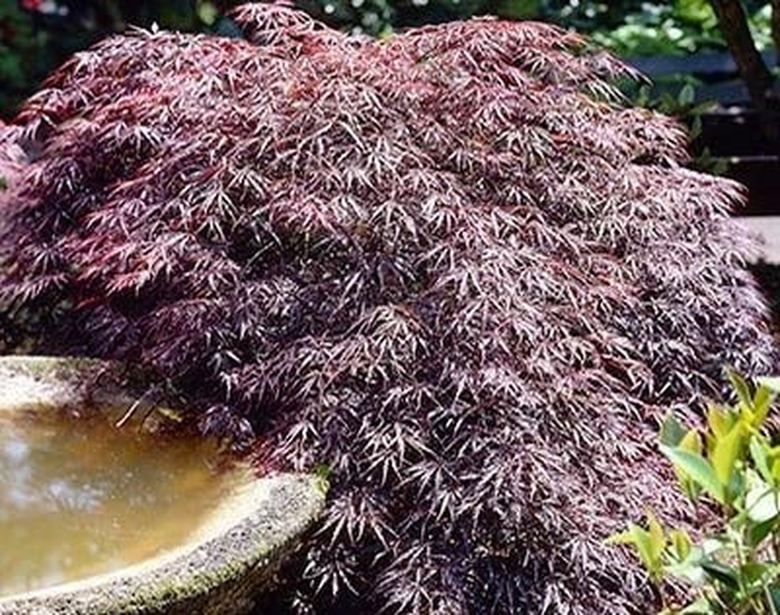How To Care For A Tamukeyama Japanese Maple
A Tamukeyama maple (Acer palmatum var. dissectum 'Tamukeyama') is a type of Japanese maple with elongated, lacy leaves that turn a rich purple-red in fall. Tamukeyama Japanese maples are dwarf trees that can grow up to about 8 feet tall and 12 feet wide (but are often smaller), making them ideal for smaller gardens or to add to spaces that aren't suitable for larger trees. They can even be grown in containers and on patio areas.
There's more good news: Tamukeyama maples are hardy and don't require much ongoing care after they're planted . Here are some important things to know about how to care for a Tamukeyama Japanese maple tree.
Where and How to Plant a Tamukeyama
Where and How to Plant a Tamukeyama
Give your Tamukeyama Japanese maple tree the best start in life by planting it in the right conditions. If you want to plant your tree outdoors, it's important to know that Tamukeyama Japanese maples thrive in U.S. Department of Agriculture plant hardiness zones 5 through 8. This means there's a wide range of areas where these trees can thrive, although they generally don't love very hot climates. If you live in the South, for example, make sure the tree will have plenty of afternoon shade.
Select a spot in your garden where there's room for the tree to grow to its full width and height as it doesn't like being crowded. Place it where the soil is moist, easy draining, and slightly acidic (with a pH of 5.7 to 7.0). Tamukeyama Japanese maples like full sun in cooler climates and part sun/part shade elsewhere.
Spring and fall are the best seasons to plant your tree as weather conditions are milder. However, if you avoid very cold or very hot conditions, you can plant these trees at any time of year. Add some slow-release fertilizer to the soil when planting the tree to give it an extra boost of nutrients.
Ongoing Care for a Tamukeyama
Ongoing Care for a Tamukeyama
Tamukeyama maples are low maintenance, but following a few simple care tips will help yours stay in top condition. If you live in a cold climate with snow in winter, add 2 to 3 inches of mulch around the base of the tree to protect the roots (don't let the mulch touch the trunk). Keep the soil around the tree moist but not overly dry or constantly soggy as both can harm the tree.
As well as adding fertilizer when planting the tree, it's also a good idea to apply some slow-release fertilizer or compost around the tree in spring. Only fertilize it once per year.
Tamukeyama Japanese maples don't usually need much pruning, although you might want to do some light trimming with a clean pruner to remove dead branches or maintain a particular shape. Summer and winter are the best times to prune these trees. Aim for minimal pruning to retain the tree's natural beauty.
These trees are quite hardy in the face of pests, but they can be susceptible to scale, mites, and aphids. These are treatable with natural remedies like horticultural oil, neem oil, or insecticidal soap.
References
- U.S. Department of Agriculture: USDA Plant Hardiness Zone Map
- Conifer Kingdom: Japanese Maples in the South
- PlantingTree: Tamukeyama Japanese Maple
- PlantingTree: How to Prune Japanese Maples
- Missouri Botanical Garden: Acer palmatum var. dissectum 'Tamukeyama'
- Wayside Gardens: How-to: Planting and Caring for Japanese Maple Trees
